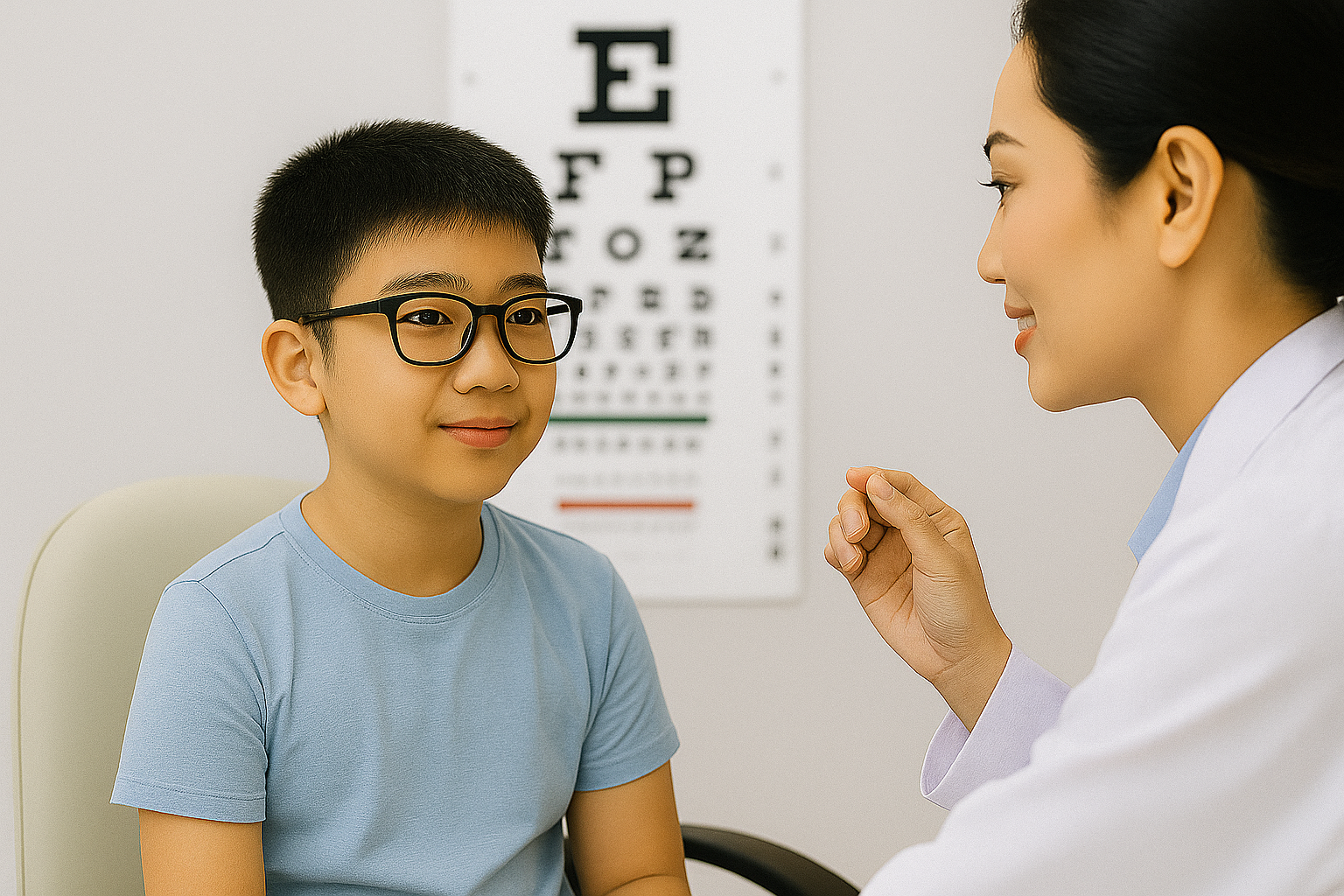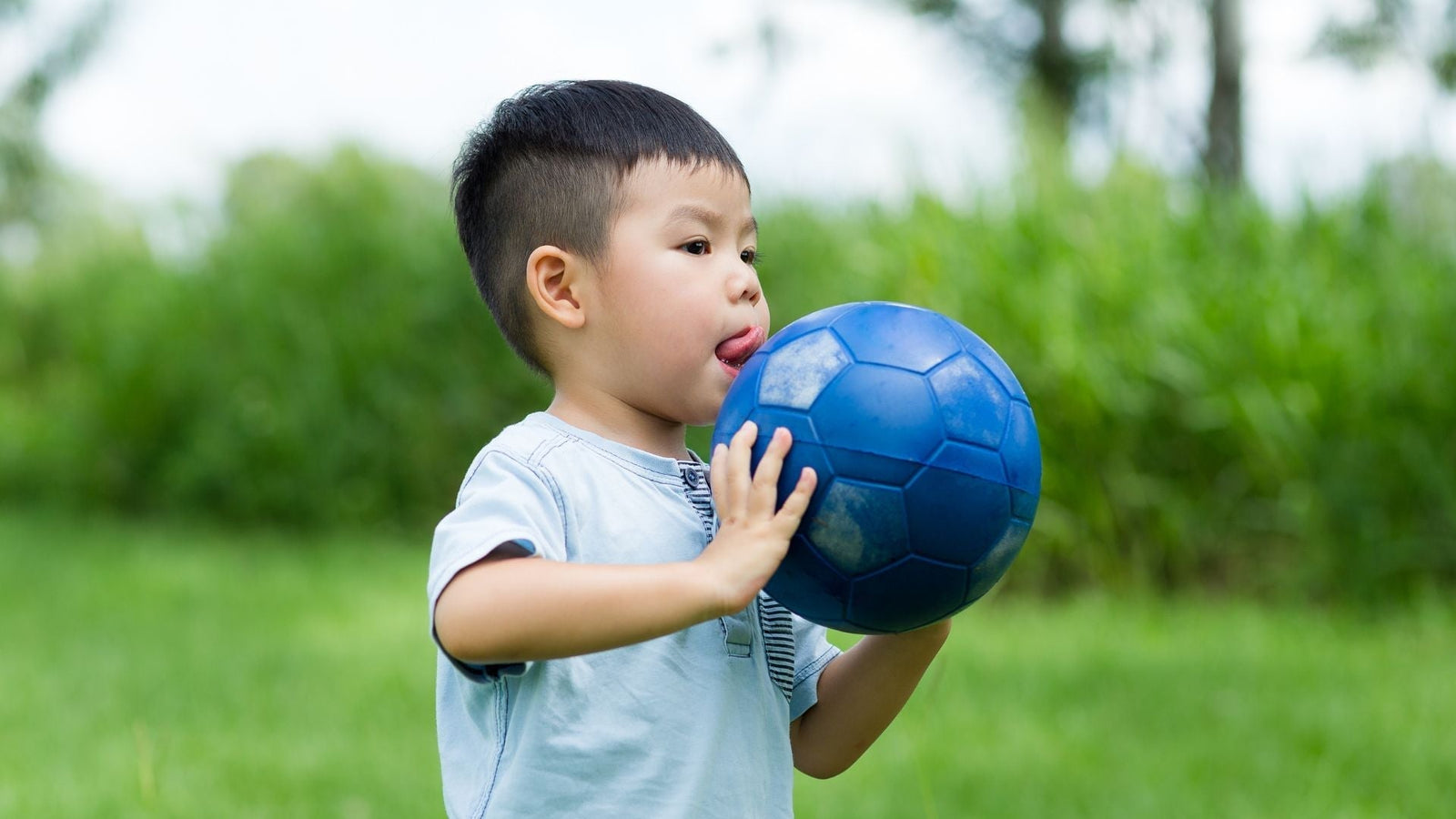Protect your family’s vision today


Proper eye care and good eye health are essential at a young age to prevent vision problems, like myopia or short-sightedness. According to the National University Health System, childhood myopia is common in Singapore, with over half of the children in the country developing myopia by age 12. When their myopia begins earlier in life, there is a greater risk of it progressing at severe levels as they grow older. High myopia can also lead to other eye complications in the future, like cataracts and glaucoma. As such, parents should learn more about myopia and guide their children in practising better eye care. In this blog, we give you more in-depth information about myopia and the types of myopia control options that can help slow down its progression.
Myopia, or short-sightedness, is a refractive error where objects at a distance appear blurry while nearby objects are seen clearly. With myopia, the eyeball may be too long, for the focusing power of the eye. As such, it makes the light from distant objects fall out of focus within the eye. Myopia typically starts developing in childhood and adolescence and then becomes more stable after 20 years old.
The exact cause of myopia in children is still yet to be fully understood. However, healthcare experts believe there are two contributing factors to childhood myopia — genetics and environmental factors. Findings suggest that a child with a family history of myopia is more susceptible to developing myopia. However, the progression of myopia will also depend on how the child takes care of their eyes. Certain environmental factors increase their likeliness of developing myopia, like excessive near-work activities and less outdoor time. Being exposed to too many near-work activities, like reading and using screens, can strain the eyes, which may lead to myopia.
When your child shows signs of myopia, like squinting their eyes or going up close to watch television, you must see an optometrist or optician in Singapore for eye examination and consultation. Eye exams for children are more extensive at our clinic than adult eye exams, beside the usual visual acuity test and refraction test, we also includes tests that looks at the eyeball length, a critical measurement that allow us to better understand how your child’s eyeball length is growing in relation to their eye power. We also assess your child’s binocular vision and accommodation status, i.e. how well their both eyes work together and their eyes’ reading stamina and focusing accuracy The visual acuity test will also be done to determines how well your child can see details of certain letters from a specific distance. And, a refraction test uses lenses of different strengths to identify your child’s prescription.
If your child is diagnosed with myopia, there are different treatment options available for myopia control.
Myopia control spectacle lenses and myopia control contact lenses are effective options for managing myopia in children. Spectacle lenses use innovative technologies to create a myopia control signal in the periphery, helping regulate eye growth and slow myopia progression. Contact lenses, typically employ a multifocal design to provide clear vision for near and distance objects while introducing myopia control signals to the peripheral retina. Both these options allows your child to have clear vision and has the additional benefit of helping to control myopia progression.
Orthokeratology, or Ortho-K, is a non-surgical treatment option for myopia control that uses specially designed and fitted contact lenses to reshape the cornea. The lenses work by flattening the centre of your child’s cornea, changing how light is bent when it enters their eyes. It is usually worn overnight and removed during the day. Ortho-K lenses are rigid, gas-permeable lenses that are capable of reshaping the cornea while still allowing oxygen through the eyes so it remains healthy. These lenses have been shown to slow down the progression of myopia. You can learn more about how Ortho-K can help myopia in children when you read our previous blog.
Encouraging your child to practise good eye care habits is crucial in myopia control. Some good eye care habits include:
When it comes to helping your child with myopia, our professionals at Eyecare People provide solutions that are customized for your child’s needs. Our myopia control programme involves different evidence-based solutions and myopia control technologies to help control your child’s myopia. We also provide patient education for parents to help them understand childhood myopia better so that they can also help their children prevent vision issues and loss in the future.
Book a consultation with our professionals today.
Comments will be approved before showing up.

Late-night homework, endless tuition, and hours of gaming — today’s screen-heavy lifestyle can quietly speed up your child’s myopia. Learn how regular 3-monthly eye reviews, tailored myopia control treatments, and professional guidance can slow progression, protect long-term eye health, and help kids build healthy vision habits for life.

Think your progressive lenses shouldn’t cost more than your phone or laptop? Think again. Premium progressive lenses are precision-engineered tools tailored to your exact vision, lifestyle, and frame — using cutting-edge technology that rivals any modern device. In this article, we break down why these lenses come with a higher price tag, and why they’re worth every cent for daily comfort, clarity, and performance.

Worried your child’s myopia keeps getting worse each year despite wearing glasses? Discover how myopia control lenses like MiYOSMART, Stellest, and ZEISS MyoCare—available in Singapore—can help slow progression and protect long-term vision. Learn how to choose the right option for your child, based on clinical evidence and expert guidance.